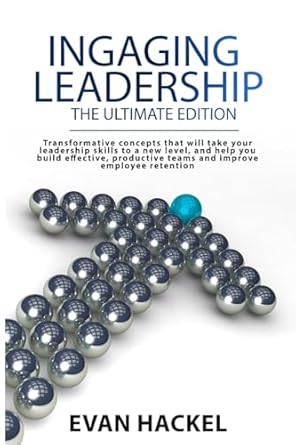No products in the cart.

By Evan Hackel
Ingagement is a leadership philosophy that emphasizes involving employees’ minds, creativity, and emotions rather than just giving them instructions. When leaders align people and foster a collaborative environment, organizations become more successful.
What is Ingagement?
Ingagement is a leadership approach that goes beyond mere engagement. It involves actively involving employees in decision-making processes, encouraging their input, and valuing their contributions.
Traditional leadership methods often involve top-down directives. In contrast, my book Hackel’s “Ingaging Leadership: The Ultimate Edition” introduces Ingagement, a philosophy that involves everyone in the decision-making process.
Key Principles of Ingagement
Benefits of Ingagement
Real-Life Examples
Conclusion: Ingagement is a powerful leadership approach that can transform your organization. To learn more about how to implement Ingagement in your workplace, buy my book here.